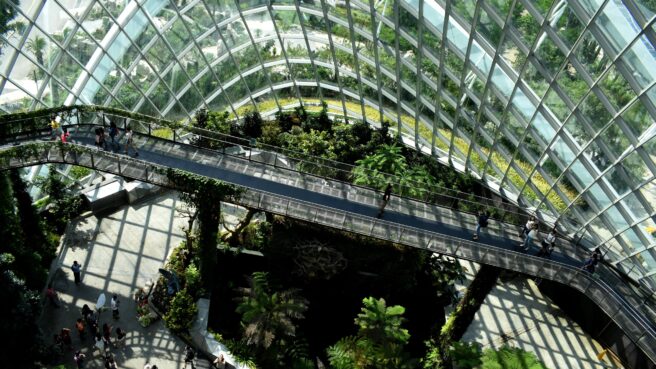It’s Time for Greener IT Asset Management

Before 2020, how often did organizations consider the environmental impact of their laptops, desktops and servers? Was energy consumption a pivotal factor in procurement for laptops? More often than not, these considerations took a back seat for the majority of organizations. However, a shift is underway, driven by the escalating concern over e-waste, energy consumption and emissions related to these devices.
In this blog post, we will show you the driving factors behind why we need sustainable IT asset management (ITAM) practices, how to implement them into your business, how they can reduce the impact on the environment’s capital whilst increasing your organization’s capital, and deliver on what your customers and employees want to see from a sustainable viewpoint.
There are many factors why this area of ITAM is gaining more focus, however, there are two universal goals under the United Nations Sustainable Development Goals (SDG) that are driving this:
A deeper dive into sustainability goals for greener ITAM
SDG Goal 12: Responsible Consumption and Production
Goal 12 is about ensuring sustainable consumption and production. The reason the UN named this as a global goal was that our planet provides us with an abundance of natural resources. However, we have treated Earth as an endless supply chain, and we currently consume more than what the planet can provide. In fact, every year there’s a day called “Earth Overshoot Day,” which occurs when humanity’s demand on nature exceeds Earth’s biocapacity. This year, Earth Overshoot Day was on August 2. In simple terms, by the second of August this year, we had already consumed the earth’s compacity for what it could produce for the whole of 2023. A negative compounding factor of this abundance of consumption is the outcome. In 2022, the estimated e-waste produced was 59.4 million metric tons. To put this in perspective, that’s the weight of the Great Wall of China, which is 13,171 miles long.
SDG Goal 13: Climate Change
The aim of this goal is to take urgent action to combat climate change and its impacts. The motivation behind this goal is to achieve a climate neutral world by 2050 and to limit global warming to below 2°C (35.6°F) — with an aim of 1.5°C (34.7°F)— compared with pre-industrial times. All organizations should be setting plans and targets to reach net-zero emissions aligned to 2050. This is across all scopes (both direct and indirect).
So, how can we achieve greener ITAM?
Step 1: Get a baseline position of your current assets.
Before we can make a plan, we must first understand what our baseline position is. To do this, you will need to gather an inventory of all your IT assets (laptops, desktops, services, mobile devices, etc.). If you have an asset register or an inventory solution, this can help speed up the process and establish a baseline, as you can discover and report on all your IT assets automatically.
Step 2: Assess the environmental impact of your current IT assets.
Devices consist of a number of minerals and materials that had to be mined and processed before entering the manufacturing process. When evaluating impact, you should assess not just tangible, hardware materials, but the entire lifecycle of the device, from factory conditions, to the percentage of recycled plastic and energy consumption of the device. Manufacturers and third-parties can provide sustainable factors and ratings associated with devices, so that you can start to rank the most sustainable and energy-efficient devices in your organization. This is how we can start to support Sustainable Development Goals (SDGs) 12 and 13. Getting visibility of the environmental impact of all your devices can be a large undertaking. However, there are solutions to assist with this.
Step 3: Prolong the lifespan of your assets to reduce emissions.
If you prolong the lifespan of a laptop from four years to six years, you can reduce its total emissions by 28%. This is due to the highest proportion of emissions being created in the manufacturing process. What’s more is you could potentially reduce the cost of ownership also by 28%. This does come with a maintenance aspect with the possibility that in order to prolong an asset, you may have to replace the memory, hard drive and battery.
Step 4: Setting a sustainable procurement strategy.
Now that you have established a baseline and understand the sustainable credentials of your devices, you can now strategize how to improve your position moving forward. You can achieve this by replacing devices that no longer support the business user’s role with sustainably procured assets. This can be:
- Via third-party, sustainability-certified devices that have met the threshold to be awarded certifications of sustainable assets
- By procuring from eco-friendly IT vendors, for example, vendors that remanufacture laptops
- By vendors who use circular frameworks for their designs
- Via responsible leasing, where there are multiple lease cycles for a device
Greener ITAM is achievable with these steps. They can help your organization meet your sustainability goals, as well as the global goals. You can contribute to SDG 12 by purchasing IT assets ethically and extending their lifespan, and have a positive impact on SDG 13 by selecting devices that are more energy-efficient and have lower carbon footprints in their creation and operation. It’s time for greener ITAM.